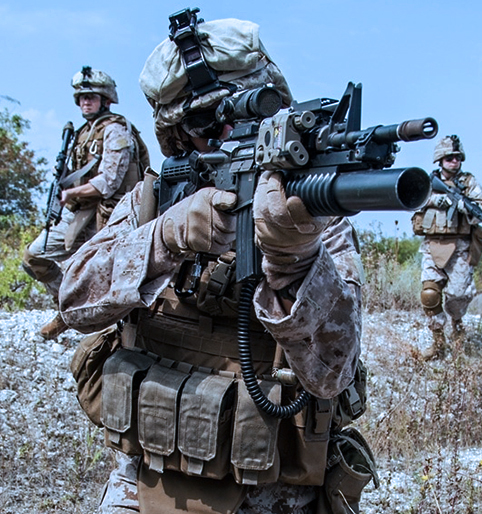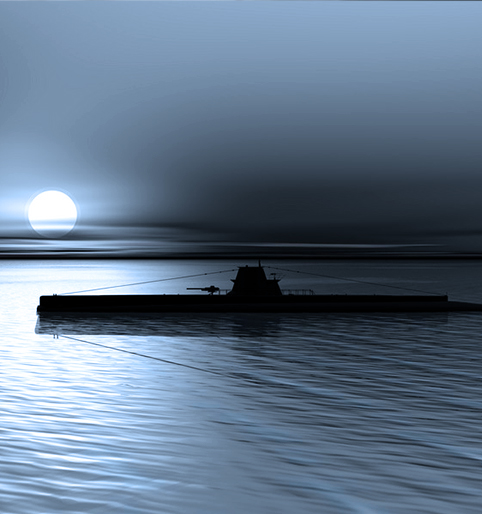Defense Markets
Long-term partnerships with multiple applications
There are a wide variety of opportunities for MicroPower's technology in the defense sector, and we have established relationships with militaries and defense contractors in different parts of the world
In particular, we have had a Cooperative Research and Development Agreement (CRADA) with the US Army Research Labs since 2012.
This long-standing relationship with ARL is significant as it provides a strong level of reference and support to any initiatives carried out within the US Department of Defense, a compelling Government validation for third party customers and a technical reference point with leading scientists that has allowed both parties to benefit from each other’s work.
Currently, ARL is actively involved in key projects with different MicroPower’s customers and continues to provide assistance in facilitating prototype demonstrations and introductions to various branches in the US military. These projects have already begun to generate revenue and we are focusing on further development and sales in this area.
As ARL is both the gatekeeper for new technologies being proposed to the US Army and a recognised authority on thermoelectrics, we believe this collaboration will facilitate the adoption of MicroPower’s technology for various applications within the armed forces that have a publicised need for high-efficiency thermoelectric devices. Examples below include portable power for troops, waste heat recovery for tanks, power generation for Unmanned Aerial Vehicles, and silent operating systems for stealth submarines.

Portable Power
The US Army has a well-publicised need for a portable energy source capable of charging the batteries and equipment that troops use in the field. Fuel cells and other novel approaches do not yet offer a viable option. In certain cases, planes are dispatched to drop large packs of batteries, though this obviously presents significant financial, logistical and tactical difficulties.
The US Army Research Labs has stated that more efficient thermoelectric devices, combined with a heat source, would offer a potential solution, enabling soldiers to remain in the field well beyond the 72-hour period that current batteries can sustain and also eliminating the need for soldiers to carry additional back-up batteries, allowing them to carry more equipment instead.
Ships/Submarines
The US Navy aspires to be all-electric in order to allow stealth designs, which are free from the noise and vibration of present day propulsion systems, and in order to enable complete control of all the ship’s power for flight or stand-and-fight functions. The US Navy requires direct conversion of thermal energy to electricity with generation distributed throughout the vessel. Submarines are the primary targets for this application.
It is anticipated that outfitting navy vessels with thermoelectric generators that harvest waste heat from the primary propulsion engine will become widespread, and there are numerous other potential thermoelectric applications, for power generation, waste heat recovery and cooling, throughout the US and other navies.


Tanks
Given the Pentagon is one of the largest single consumers of fuel in the world, with annual fuel costs for the DoD topping $16 Billion, it is no surprise that all branches of the US Armed Forces are exploring viable options to reduce these costs. Consequently TARDEC, the US Army’s tank R&D center, has long expressed an interest in seeking out means of improving fuel efficiency.
Lacking moving parts, and consequently the likelihood of breaking down in the field, thermoelectric waste heat recovery systems offer an attractive proposition compared to other solutions. Preliminary tests have been carried out on M1 Abrams tanks but, as in other areas, existing thermoelectric devices have not been able to deliver the required performance.
Unmanned Aerial Vehicles
The US Armed Forces have expressed an interest in utilizing thermoelectric devices as energy scavenging systems for UAVs which are playing an increasing significant role in both direct warfare, and surveillance. Given that they are lightweight, durable, miniaturizable, silent and maintenance-free, thermoelectric systems are ideal for this type of application.
In addition, UAVs provide the ideal conditions for the temperature differential required for the thermoelectric effect: while UAVs travel at frigid altitudes, the internal tailpipe temperatures are high. An additional benefit of applying thermoelectric power generators along the exhaust train of a UAV is that it will also reduce its infrared signature, and therefore its detectability.

